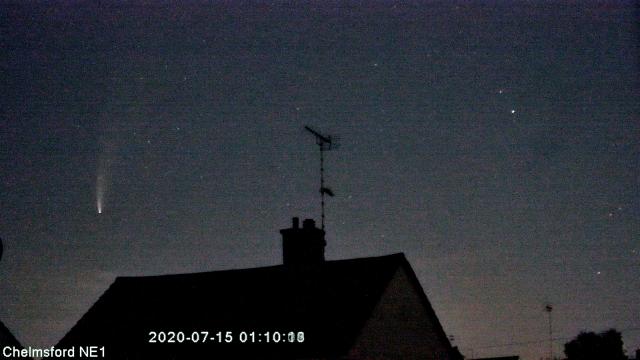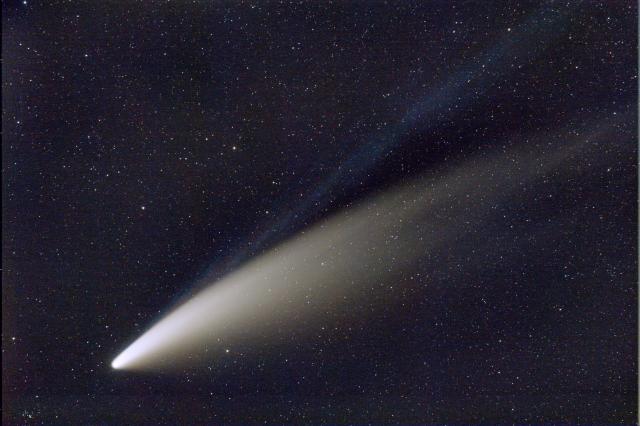Forum Replies Created
-
AuthorPosts
-
 Nick JamesParticipant
Nick JamesParticipantI’d noticed the colour change too. That’s very interesting. I should have been flying off to La Palma this weekend but that was cancelled due to C19. That comet would have been a great target from the top of the mountain.
 Nick JamesParticipant
Nick JamesParticipantIt certainly looks more prominent and the dust tail close to the nucleus doesn’t have the prominent dark band any more. Here’s my take from this morning. https://britastro.org/node/23324
 Nick JamesParticipant
Nick JamesParticipantVery impressive result Robin.
 Nick JamesParticipant
Nick JamesParticipantDavid, That is really good. I’m even more amazed that you had clear skies last night! It was raining here in Chelmsford.
 Nick JamesParticipant
Nick JamesParticipantJohn Mason and the South Downs Planetarium crew have done a great video for the general public on comets in general and C/2020 F3 in particular. You can find it here.
 Nick JamesParticipant
Nick JamesParticipantDavid, I hold you personally responsible that I now have to hoover out my keyboard after reading that Daily Mail article while eating my lunchtime sandwich. Do they actually pay their astrologer to write this stuff? I have to admit though that “Comet Neowise” is certainly having a significant influence on my life at the moment.
 Nick JamesParticipant
Nick JamesParticipantIt cleared up for a while after midnight last night in Chelmsford but I was asleep. This is a picture from a cheap north-facing IP video camera showing just how bright the comet is. This is a stack of 100 video frames, so about 4s total exposure.

 Nick JamesParticipant
Nick JamesParticipantThat’s a really good page. Unfortunately fake images like this are common. At least this one was blatant, some are more subtle and harder to identify for what they are. A good maxim is that if you see any astro image that shows something no one else is showing from someone you have never heard of, be suspicious and dig around a bit to get some idea of the authenticity. It is a shame that social media is overrun by this kind of stuff. A faked comet picture is pretty minor compared to some of the other, sometimes very convincing, fake messages out there.
 Nick JamesParticipant
Nick JamesParticipantI shouldn’t say this but I’m pleased it is cloudy tonight with a prospect of rain so I can get some sleep. I was a bit of a zombie in work today after three consecutive all night sessions.
 Nick JamesParticipant
Nick JamesParticipantffmpeg doesn’t handle FITS directly but convert (one of the command line utilities in the Imagemagick suite) will convert from FITS to any common graphic format and can stretch, crop, etc. in the process. Being command line programs they are easy to script in bash or whatever and mean that you can make timelapses very easily from raws or FITS.
 Nick JamesParticipant
Nick JamesParticipantHi Andy, Welcome to the forum. That looks like a fantastic image. Could you post a higher resolution version please with technical details (when, where, exposure, equipment, field of view etc.). You can submit it to the Comet Section via cometobs@britastro.org. Details of how to submit are here. Thanks.
 Nick JamesParticipant
Nick JamesParticipantThe real detail in the comet is spectacular. I really don’t understand why anyone would want to make stuff up like that.
 Nick JamesParticipant
Nick JamesParticipantA vivid imagination on behalf of the person who made the image. This is not real.
 Nick JamesParticipant
Nick JamesParticipantI use dcraw, Imagemagick and ffmpeg under Linux for batch manipulation of images including camera raws and generation of videos. Not sure if they are available in the Windows world.
 Nick JamesParticipant
Nick JamesParticipantDavid. The shot with the low-level NLC is wonderful. Get it printed and framed and hang it on the wall!
 Nick JamesParticipant
Nick JamesParticipantSteady Gary.
 Nick JamesParticipant
Nick JamesParticipantNo secret, just lots of frames, careful focusing, very good flat fields and being in the right place at the right time. There should be lots of opportunities over the next week or so if the weather cooperates.
 Nick JamesParticipant
Nick JamesParticipantRobin, this is a very active and probably quite large nucleus that has been strongly heated through perihelion so it would be worth searching for a possible sodium tail. I don’t have a suitable filter (all mine are designed to block Na D!) but a good challenge for others.
 Nick JamesParticipant
Nick JamesParticipantFantastic pics and observations everyone. Here is a colour pic of mine from this morning showing the two tails. The FoV is 6.4×4.3 deg.

 Nick JamesParticipantJust got back from one of the great observing experiences of my life. A stunning comet and wonderful NLCs in a clear, deep blue sky. The images of 2020 F3 here are single frame JPEGS straight from the camera. I need some sleep now and will calibrate and stack the raw images later.
Nick JamesParticipantJust got back from one of the great observing experiences of my life. A stunning comet and wonderful NLCs in a clear, deep blue sky. The images of 2020 F3 here are single frame JPEGS straight from the camera. I need some sleep now and will calibrate and stack the raw images later.

 11
11 -
AuthorPosts
